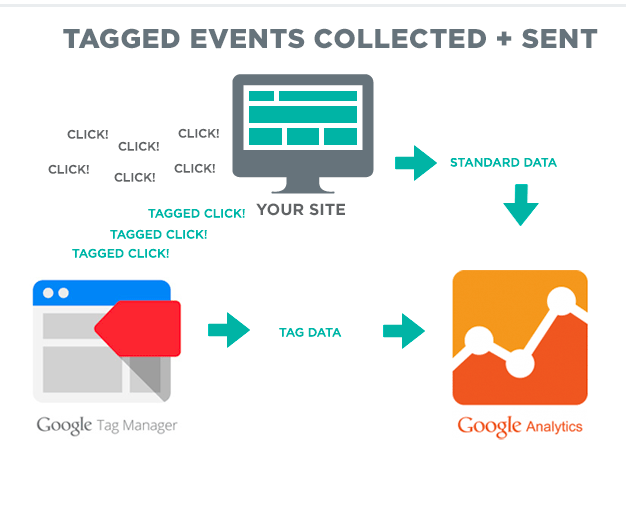Google Analytics Event Tracking Fundamentals Explained
Table of ContentsGoogle Analytics Event Tracking Fundamentals Explained6 Simple Techniques For Google Analytics Event TrackingThe 6-Minute Rule for Google Analytics Event Tracking3 Simple Techniques For Google Analytics Event TrackingFascination About Google Analytics Event TrackingThe Google Analytics Event Tracking PDFs
If you're going to set up event tracking by hand, after that you're mosting likely to need to add some additional code to the aspects you wish to collect information from. The code you're mosting likely to function with will certainly look something such as this: There are four components within that code snippet that you're mosting likely to require to define yourself: event, Group, occasion, Action, event, Label and occasion, Value.
As you can see, two of these are required (category and activity) while tag and value are optional. It all relies on the sort of info you want relayed back to Google Analytics when a customer clicks on the defined component (Google Analytics Event Tracking). It will certainly be much simpler to define these parts if you evaluate your web site and choose which elements/actions you intend to track
Getting My Google Analytics Event Tracking To Work
Now, you'll be asked to specify the and and you'll wish to choose from the drop-down food selection that appears when you click. This will certainly bring up the exact same occasion tracking elements we took a look at earlier, which you'll require to submit. When you have actually defined these, you can move to the 2nd box and choose the trigger that will discharge your tag.
On the next screen, you'll additionally have a field for naming your trigger and, if you click package, you'll see a list of the different triggers you can pick. In this case, we wish to choose and after that select the choice listed below. You'll set the trigger to just terminate when a component is clicked with an URL that includes the.
Every internet site talks. Before data analytics, we couldn't hear the voices of our internet click this link sites. Just how do you recognize what your website is saying? Easy - Event tracking! Event tracking provides you a photo of just how individuals involve with your internet site and organization (Google Analytics Event Tracking). Do you wish to know even more? Check out on as we check out whatever you need to know, including what it is, why you should track occasions, just how to take care of occasions data, and other relevant FAQs you might have.
9 Easy Facts About Google Analytics Event Tracking Described
You can change in between your event classifications, activities, and tags in the Top Events report. The Occasion Pages record displays the pages where occasions are triggered.
Events in Google Analytics have 4 major components. Google Analytics uses these codes to track user interactions and group them into event records (Google Analytics Event Tracking).
A checklist of the criteria you can track on your internet site is on the. After examining all essential areas, you can click "X" to close the window and return to the Overview menu on the.
Some Known Questions About Google Analytics Event Tracking.
Choosing "False" will protect against that session from being a bounce. If you have not done so, you may require to establish a variable in the Google Analytics Setups box. Click "New Variable ..." if you can't locate one to select. Hereafter, enter your GA tracking ID in the Monitoring check this ID field.
To do this, adhere to the next collection of actions: After setting up the fields, choose the "Triggering" section. When configuring your brand-new trigger, click the "+" switch, then the "pencil" button, then pick your trigger type.
Google Analytics Event Tracking - Truths

When it comes to recognizing which areas and components are leading consumers via your conversion channel, you still will not recognize. So, without occasion tracking, GA reports will only count brows through as single-page sessions, even if users invest a whole lot of time on one web page and involve with it dramatically (and a bounce).
However how does occasion tracking achieve this?Single-web page sessions referred to as bounces start and wrap up on the same web page. Without event monitoring, GA will identify an individual's go to as a bounce if they do not navigate to an additional page, no matter of exactly how they connect with it. A video-rich web page can have a higher bounce rate if occasions are not tracked.
The Only Guide to Google Analytics Event Tracking
For GA to take event hits into account when determining bounce rates, you need to pick "Non-interaction occasion" as "False" during the GTM setup. Setting "event objectives" with occasion activity is an excellent way to track individual activities you value extremely, such as brand-new lead entries or click a telephone call to activity.